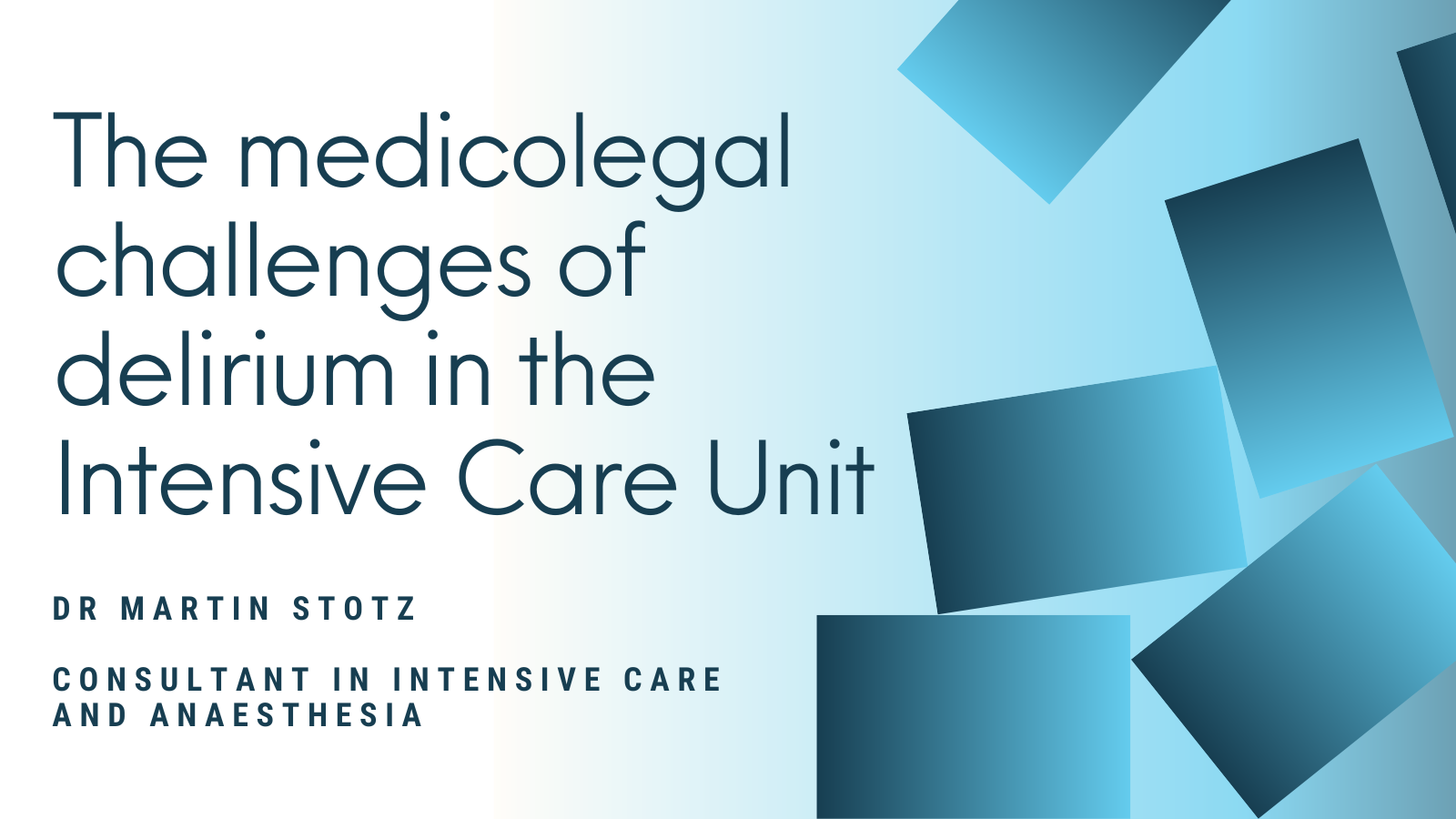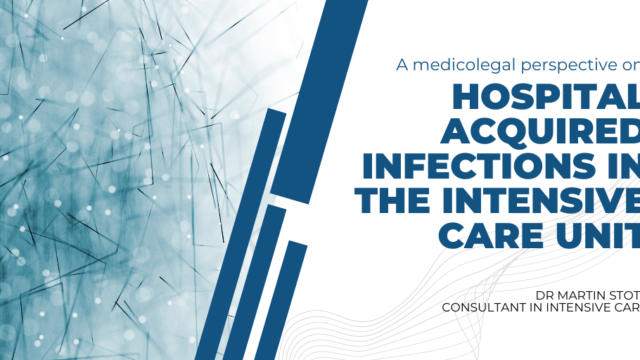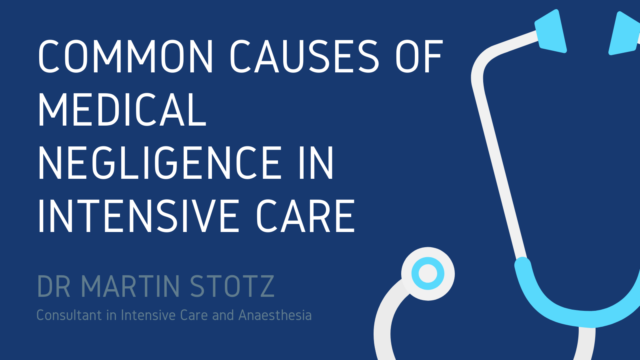The medicolegal challenges of delirium in the Intensive Care Unit

Delirium is a form of acute brain dysfunction, defined by acute disturbances in attention, awareness or cognition, that develops over hours or days and cannot be explained by an alternative diagnosis or comatose state. Patients who develop delirium are at an increased risk of complications, and the condition is also associated with longer hospital stays and increased healthcare costs. Furthermore, delirium is a major risk factor for cognitive impairment following critical illness, which can be particularly debilitating, and the severity of the impairment is related to the severity of the delirium.
Over half of all patients admitted to an intensive care unit (ICU) will develop delirium at some point during hospitalisation, and in patients who are mechanically ventilated, this proportion rises to around 75%. Known risk factors include old age, frailty, pre-existing neurologic disease or cognitive impairment, and comorbidities such as cardiac disease and hypertension. It is thought that these factors lead to a lower physical or cognitive physiological reserve, which appears to reduce the capacity to sustain normal brain functioning during the stress of critical illness. Various medications commonly used in the ICU setting, such as benzodiazepines, opiates, anticholinergic agents and corticosteroids may also represent significant co-factors in the development of delirium.
The cause of delirium is currently unknown, but it is likely that multiple brain pathways are affected during critical illness and combine to affect cognitive function. Proposed mechanisms include brain inflammation, poor cerebral blood flow, neurotransmitter imbalance and genetic disposition. The manifestation of the condition varies and can be classified into one of three types: patients with hyperactive delirium are often agitated and restless, while those with hypoactive delirium are lethargic. When symptoms fluctuate over the course of the disease and show features of both hyperactive and hypoactive states, a diagnosis of mixed delirium is given. The latter two types are the most common, and account for over 90% of all cases. Hypoactive delirium seems to be also associated with a higher mortality rate than the other types.
In order to minimise the long-term effects of delirium, early recognition is crucial. However, this can be very difficult in patients who are sedated to tolerate mechanical ventilation. Furthermore, delirium is often found in patients with existing neurological diseases such as dementia, traumatic brain injury and stroke, which can mask the symptoms and make diagnosis even more challenging. In order to improve diagnostic rates, validated assessment tools have been developed to screen patients for delirium and offer the best chance of improving diagnosis rates and patient outcomes.
The CAM-ICU tool was specifically designed to assess patients receiving mechanical ventilation or who are sedated. However, the use of such tools is not uniform in all care centres, believing them to be too complex, too time-consuming, or simply unnecessary. Instead, they rely on clinical observation. Not surprisingly, studies have shown that clinicians who do not use an assessment tool miss up to three-quarters of delirium days. A lack of knowledge about delirium or lack of training in using the assessment tools can also impede diagnosis, as can the wrongful belief that the condition cannot be either prevented or treated. Unfamiliarity with existing guidelines concerning the management of patients with delirium, or a lack of motivation to follow them due to a belief that doing so will not confer any meaningful benefit to the patient are also barriers to diagnosis and treatment and should be addressed.
Even if delirium is diagnosed, the management of these patients remains challenging as there are few effective pharmacological treatment options. For years, antipsychotic medication was the therapy of choice, but recently it has been recognised that they confer little benefit and actually increase the mortality rate in elderly patients. However, they may have a role in reducing the agitation associated with hyperactive delirium that may result in patient harm. Dexmedetomidine, a new short acting sedative, may shorten the duration of delirium but does not appear to prevent it developing, or reduce delirium-associated mortality and long-term cognitive impairment. Due to their anti-inflammatory effects, statins have been postulated to be protective against delirium, although the results from randomised trials have failed to confirm this.
Due to the lack of effective medications, non-pharmacologic measures have become the cornerstone of delirium management. These measures have been incorporated into a care package known as the ABCDEF bundle, which comprises the following factors:
- Assess, prevent and manage pain; uncontrolled pain is a risk factor for delirium
- Both spontaneous awakening trials and spontaneous breathing trials should be performed, ideally daily
- Choice of analgesia and sedation; assess medication regimens depending on the clinical context and patient characteristics
- Delirium: assess, prevent and manage by monitoring for early identification and risk factor modification where possible
- Early mobility and exercise, using a range of activities appropriate to the patient’s condition
- Family engagement and empowerment, which helps to improve team communication and cognitive rehabilitation of the patient
In conclusion, the long-term effects of delirium can have a significant impact on the patient’s life, as the resulting cognitive impairment may affect daily activities and employment. The effect of medication has failed to show clear beneficial effects in prevention of delirium and treatment of hypoactive delirium. Implementation of the ABCDEF bundle in its entirety has been shown to significantly improve patient outcomes. Additionally, research into biomarkers may aid early diagnosis, leading in turn to better patient outcomes and reducing the risk of litigation.
Further reading:
Kotfis, K., Marra, A., & Ely, E. W. (2018). ICU delirium – a diagnostic and therapeutic challenge in the intensive care unit. Anaesthesiology Intensive Therapy, 50(2), 160–167. https://doi.org/10.5603/AIT.a2018.0011
Mart, M. F., Williams Roberson, S., Salas, B., Pandharipande, P. P., & Ely, E. W. (2021). Prevention and Management of Delirium in the Intensive Care Unit. Seminars in Respiratory and Critical Care Medicine, 42(1), 112–126. https://doi.org/10.1055/s-0040-1710572




